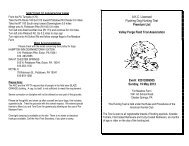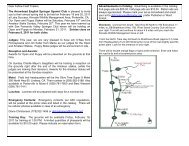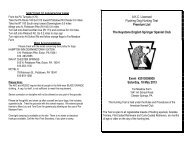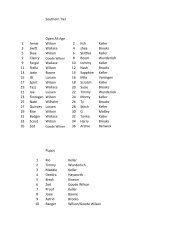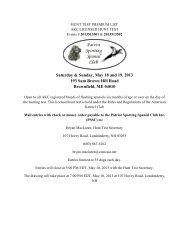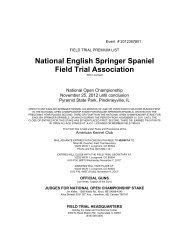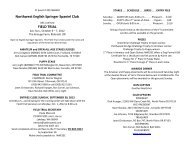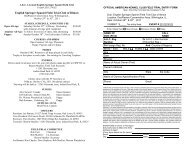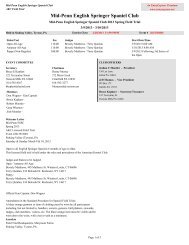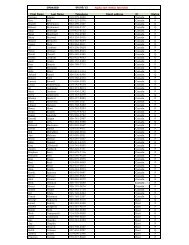MUD SLOUGH CONSERVATION - To essft.com
MUD SLOUGH CONSERVATION - To essft.com
MUD SLOUGH CONSERVATION - To essft.com
You also want an ePaper? Increase the reach of your titles
YUMPU automatically turns print PDFs into web optimized ePapers that Google loves.
<strong>MUD</strong> <strong>SLOUGH</strong> WETLAND<br />
<strong>To</strong>tal acreage: 550 acres<br />
Location: Rickreall, Oregon, Polk County<br />
Site Description:<br />
Mud Slough Wetland, located west of Salem, is one of the most diverse, productive wetlands in western<br />
Oregon. The site features a range of diverse shallow water habitats and vegetation, from small native<br />
sedges to taller cattails and rushes, as well as a single deeper pond. Willow patches and restored native<br />
wetland prairie are also present. The lack of invasive plant and animal species can be attributed to the site<br />
preparation done prior to restoration and the continued vigilance of the landowner.<br />
Wildlife: Virginia Rail, Sora, and American Bittern, use this wetland as a place to breed. During spring<br />
and fall, hundreds of shorebirds can be found foraging. During fall and winter, several thousand<br />
waterfowl and shorebirds (mainly Dunlin) can be seen. Birds otherwise rare in western Oregon, including<br />
Black-necked Stilt, Wilson's Phalarope, and the Yellow-headed Blackbird, are known to breed here.<br />
Site history<br />
In 1993, grass seed farmer Mark Knaupp took the last crop of grass seed of some of his wet bottomlands<br />
and enrolled 320 acres in the Natural Resource Conservation Service's Wetland Reserve program.<br />
The former fescue fields now support a mix of shallow seasonal marshes and wet prairies. Broad<br />
expanses of tufted hairgrass dominate the meadows, which also support a large population of Nelson’s<br />
checkermallow, a showy purple flowered plant listed as “threatened” under the federal Endangered<br />
Species
Act. The <strong>com</strong>bination of dense clay soils and carefully engineered low dikes and water control structures<br />
that allow water levels to be drawn down gradually in the spring and early summer have created a diverse<br />
mosaic of native<br />
wetland plant <strong>com</strong>munities. Landowner Mark Knaupp was so pleased with the results that he put a second<br />
piece of his property into the Wetlands Reserve Program and is now beginning Phase 4 of a wetland<br />
mitigation bank. Mark has changed to growing wetlands and wildlife habitat rather than <strong>com</strong>mercial<br />
grass seed. A total of..... acres are now wetland prairie.<br />
Unlike virtually every other wetland in the Willamette Valley, the Mud Slough Wetland Preserve is<br />
almost free of reed canarygrass and other invasive non-native plant species. It’s partly a result of<br />
geography – Knaupp’s wetlands are near the top of a small drainage with no major upstream sources of<br />
nonnative seeds. But it’s also the result of an intensive management strategy that has cleared the way for a<br />
natural wetland to develop on its own.<br />
Partnership History<br />
In 2005, Mark Knaupp approached The Wetlands Conservancy, an Oregon non profit land trust about<br />
putting a conservation easement and setting up an endowment to keep the land in wetland protection for<br />
perpetuity. The mission of The Wetlands Conservancy (TWC) is protection and conservation of<br />
Oregon’s greatest wetlands – our most biologically rich and diverse lands. In addition to traditional land<br />
protection through acquisitions and conservation easements, TWC also promotes <strong>com</strong>munity and private<br />
partnerships to permanently protect and conserve Oregon’s greatest wetlands. The Mud Slough Wetland<br />
was one of the identified Oregon Greatest Wetlands. since 2005, TWC and Mark Knaupp have been<br />
developing a long term management plan for the site.



